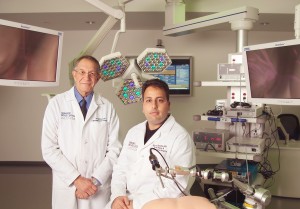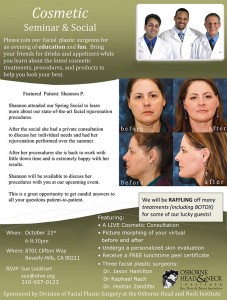- Folded Ear in Newborns: Treatment Options - April 11, 2018
- Newborn Ear Deformity: What Can Be Done? - April 11, 2018
- Ear Molding: An Overview - November 2, 2017
- Otoplasty for Protruding Ears - September 26, 2017
- Basal Cell Carcinoma: Facial Reconstruction Timing - September 26, 2017
- Clinical Considerations of Mohs Reconstruction of Cheek Defect - September 26, 2017
- Basal Cell Carcinoma: Nasal Bridge Reconstruction - September 26, 2017
- Skin Cancers Involving the Eyebrow: Clinical Considerations - October 3, 2016
- Treatment of Multiple Skin Cancer Lesions - June 1, 2016
- Skin Cancer: Nasal Reconstruction and Scar Management - June 1, 2016
Are there less invasive options for the repair of my cheekbone fracture?
Question: I was recently playing golf with my friends. I was unfortunately not paying attention when one of our players was getting ready to tee off. I was standing too close during his backswing and was hit in the cheek by his driver. The initial pain was severe and I felt like there was a popping sensation. I ended up going to the emergency room where I was told that I had a cheekbone (zygoma) fracture and would have to see a specialist for its repair. Luckily my eye was undamaged during the ordeal. I have had a few consultations and am concerned about the invasive nature and the scars that this procedure will leave. Are there any less invasive options for the repair of my cheekbone fracture?
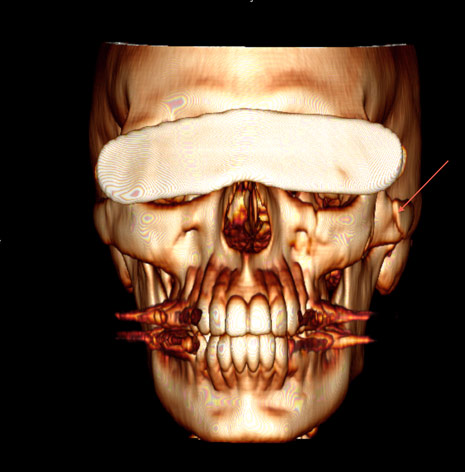
Answer:
Repair of cheekbone fractures is dependent on several factors including the severity of the trauma and the damage to nearby critical structures. Contrary to common perception, the cheekbone is not a single bone, but rather, a combination of bones that gives rise to the area that is referred to as the cheekbone. These bones can fracture in a variety of different combinations and locations. In addition fragments can displace, or move from their original locations, further complicating the injury.
In cases of uncomplicated fracture where significant movement of the bone fragments has not occurred and surrounding structures have not been damaged, simple observation and close followup by a facial trauma specialist is usually recommended. More severe cheekbone fractures that have resulted in bone fragment dislocation or disfigurement require resetting bones and fixation to prevent their movement during healing. Finally, in cases of severe trauma and damage to critical structures such as the eyes, more advanced surgical interventions are usually required. In all cases of facial trauma, prompt evaluation by a facial trauma specialist is highly advisable.
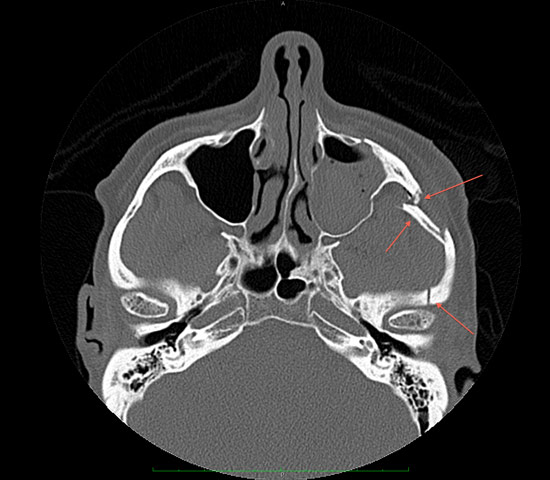
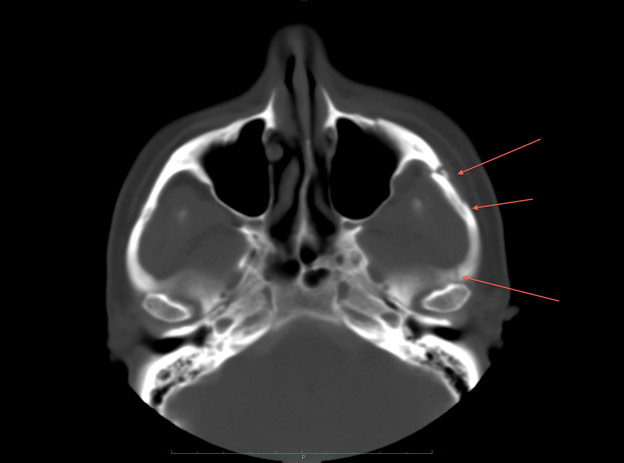
The majority of cases of cheekbone fracture, such as this specific golf injury, fall into the second scenario where there has been fragment displacement but no damage to vital or critical structures. Traditional repair procedures of this injury would require invasive surgery, extensive scarring along the scalp, and bulky plating to hold fragments. In contrast, treatment by a facial trauma specialist would entail minimally invasive procedures. A facial trauma surgeon will make a single small incision through inside of the mouth, along the brow line, or the temple in order to reposition the broken fragments. Small hardware is then placed through this incision to stabilize the broken fragments during healing. In contrast to traditional platting, this thin hardware is unnoticeable and leaves no cosmetic distortion such as noticeable scarring.
The physicians of the Osborne Head and Neck Institute’s division of facial trauma and sports injury division are double board certified in plastic and reconstructive surgery and head and neck surgery. This unique combination of specialties allows these facial trauma and sports injury specialists to address both the functional and cosmetic concerns that are typically associated with injury to the face. These physicians provide a sophisticated in-depth evaluation utilizing the latest technology and scientific advancements. Their combined decades of clinical experience as well as constant review of scientific evidence allow the physicians of OHNI to determine the best treatment plan possible maximizing functional and aesthetic outcomes.
Key Points:
- Repair of cheekbone fractures is dependent on several factors including the severity of the trauma and the damage to nearby critical structures.
- The cheekbone is not a single bone, but rather, a combination of bones that gives rise to the area that is referred to as the cheekbone. These bones can fracture in a variety of different combinations and locations.
- Uncomplicated cheekbone fractures without displacement can be treated with close observation.
- A facial trauma and sports injury specialist should treat fractures that have resulted in bone fragment displacement.
- A trauma specialist can treat fractures with minimally invasive techniques and no visible external scars.
- Traditional cheekbone reconstructive procedures are invasive and result in large scars and bulking bone stabilization plates.
To learn more about Dr. Hootan Zandifar or cheekbone fractures and sports related facial trauma please visit www.facialtraumamd.com.

